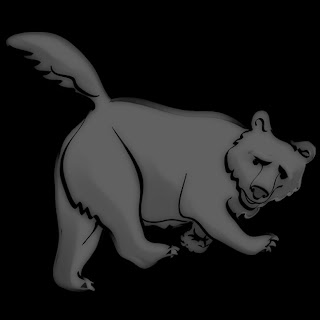 |
| Callisto and Arcas |
 |
| Zeus according to Marvel Comic Books |
Note: When referring to the characters I will use their Greek names instead of their Roman ones, assuming these are more familiar to readers.
When looking for the inappropriate parts, Zeus is a good place to start. Most people know that Zeus was the king of the gods and that he threw lightning bolts. If this is all you know, you may have thought of him like a superhero of sorts, a powerful figure for us to relate to and empower our daydreams. And maybe you even heard that Zeus slept around on his wife. Well, “he’s a god, it’s what they do in these stories” you might have thought. But, if you are like me, you didn’t realize that his sleeping around could actually have been the violent rape of virgins like Callisto. This point in the story is already upsetting for the reader, but as the story continues we soon see that Callisto, the victim, feels ashamed and is blamed and abandoned by the goddess she serves. And soon after her son is born, Callisto is met by Zeus’s wife, who pulls her to the ground by her hair while blaming her and calling her a harlot, before punishing her by transforming her body into a bear. Callisto, who was once a devoted virgin, the favorite of Artemis, and a masterful hunter, becomes a broken victim of rape, thrown out from her community, and forced to abandon her child. And if that isn’t enough, when she finally sees her boy again he tries to kill her. In the end, her and her son are reunited and placed in the sky as constellations, surely a great honor, but the story is still unsettling. Once, when I finished telling a much milder version of this story, a mother added for the benefit of the child, “So it had a happy ending.” I’m not sure why she felt her child needed it to have a happy ending, but I got the impression that she didn’t like the one it had. We may be accustomed to our stories, especially children’s stories, to always finish with a happy ending, but the ancient Greeks apparently did not. Of course not every classical myth is as disturbing as this one, but most have something many would deem inappropriate for children or against the values of our society. For instance, other stories may include child abduction, pedophilia, bad morals, and violence on a level we are unaccustomed to. But before I convince you (and myself) that Greco-Roman myths should be banned from our culture, let’s take a look at four reasons why they probably haven’t yet and probably never will.
 |
| pppst.com has free powerpoint lectures on Roman Architecture |
 |
| Percy Jackson Popular story based on Greco-Roman myth |
3. You can skip the offensive/inappropriate parts. There are so many modern retellings that one doesn’t need to be exposed to the inappropriate elements. If you don’t like reading about Zeus raping someone, and you don’t want your child reading about this either, then find a version without it. Or retell it. Or skip that story.
4. They are great for teaching. Greek myths are a great resource for teachers. Because of the influence of classical myth and culture, and because these myths are so popular with children and adolescents, they can be used in any number of ways by an educator. A quick search online will bring up all kinds of ideas for using classical myths in the classroom. As a planetarian (professional planetarium educator) I use myths in relation to the constellations. I enjoy talking about stellar evolution, space exploration, and galaxies (I really do), but for me the highlight of a planetarium show is the stars and constellations. I confess that I don’t tell “star stories” in every show, but most of the time I do. And what I’ve learned is that people really enjoy it. Once, while spending the day giving lessons on ancient astronomy and myth for 7th graders at a local school, I was amazed to see many of the students give up their normal lunch period to come back into classroom to hear more stories. When we look up at the stars on a dark night we really are awestruck. Soon our intellect, emotions, spirituality, and curiosity kick in as we wonder about the nature of the universe. We think about our own beliefs and wonder about the beliefs of others through the ages. One of my favorite styles of planetarium shows happens when we have overnight camps at the museum. After an evening of hands-on science activities and just before bed, we bring the campers into the planetarium. These are usually kids around 10 years old. Instead of putting on the computer projectors and giving a slide show on the constellations, I just turn the lights down, tell stories, and point out the constellations with a laser pointer. Sure, the campers may have thought the constellations were interesting themselves, but the addition of stories makes them real.









